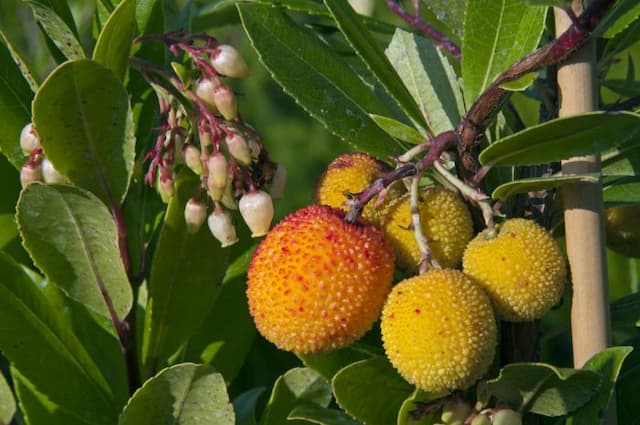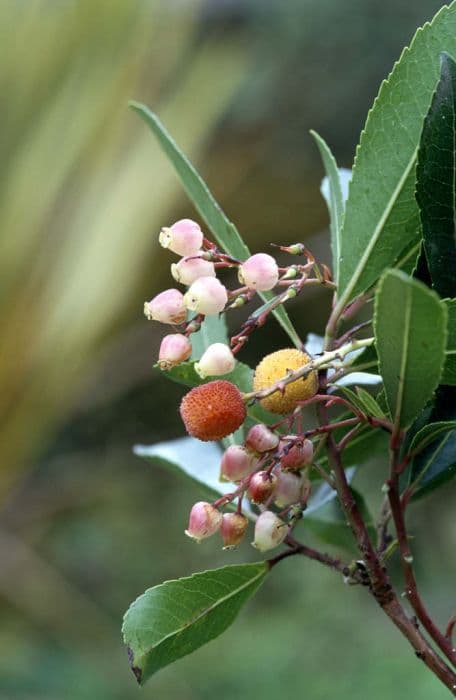Cornish heath 'Kevernensis Alba' Erica vagans f. alba 'Kevernensis Alba'











ABOUT
'Kevernensis Alba' is a compact dwarf evergreen shrub to 25cm tall, with bright green foliage and white flowers in short racemes in late summer and autumn
About this plant
 Names
NamesFamily
Ericaceae
Synonyms
Cornish Heath, Kevernensis Alba
Common names
Erica vagans f. alba 'Kevernensis Alba'.
 Characteristics
CharacteristicsLife cycle
Perennials
Foliage type
Evergreen
Color of leaves
Green
Flower color
White
Height
1 foot (0.3 meters)
Spread
2 feet (0.6 meters)
Plant type
Shrub
Hardiness zones
7
Native area
Europe
Benefits
 General Benefits
General Benefits- Aesthetic Appeal: Adds visual interest to gardens with its delicate white flowers and evergreen foliage.
- Low Maintenance: Requires minimal care once established, making it suitable for gardeners of all levels.
- Drought Tolerance: Capable of surviving in dry conditions after it has been established, reducing the need for frequent watering.
- Wildlife Attraction: Flowers provide nectar for bees and other pollinating insects, supporting biodiversity.
- Tolerance of Poor Soils: Able to grow in less fertile soils, which makes it versatile for different garden situations.
- Year-Round Interest: Evergreen nature ensures that the plant provides color and structure throughout all seasons.
- Soil Erosion Control: Its root system can help stabilize soil, reducing erosion on slopes or in areas prone to erosion.
- Wind Resistance: Makes it suitable for exposed sites or coastal gardens where wind tolerance is important.
- Compact Growth: Its manageable size makes it suitable for small gardens, borders, and containers.
 Medical Properties
Medical PropertiesThis plant is not used for medical purposes.
 Air-purifying Qualities
Air-purifying QualitiesThis plant is not specifically known for air purifying qualities.
 Other Uses
Other Uses- Cornish Heath can be used in miniature crafting or fairy gardens due to its small, delicate flowers and fine evergreen foliage, providing an ethereal touch to these whimsical creations.
- The flowers are suitable for dried floral arrangements, as they retain their shape and color when dried properly.
- Can be used in potpourri mixtures for a subtle, natural fragrance and for its aesthetic appeal when mixed with other dried flowers and plants.
- Acts as an excellent ground cover in coastal areas, stabilizing sand and preventing erosion with its extensive rooting system.
- Useful in educational settings, such as school gardens, to demonstrate plant adaptation to students, exemplifying survival in acidic soils.
- Can be utilized in photography projects and workshops, offering a soft and intricate subject for macro photography techniques.
- The plant's low-growing, sprawling habit provides a natural habitat for beneficial garden insects and small wildlife such as lizards and toads.
- Its winter hardiness makes it a suitable choice for graveyard plantings where low maintenance and year-round interest are required.
- Can be cultivated for bonsai, providing a challenge for enthusiasts looking to shape and maintain its small-scale heathland landscape in miniature.
- Its various growth habits and forms can be applied to landscape art projects, creating natural textures and patterns in large-scale environmental installations.
Interesting Facts
 Feng Shui
Feng ShuiThe Cornish heath is not used in Feng Shui practice.
 Zodiac Sign Compitability
Zodiac Sign CompitabilityThe Cornish heath is not used in astrology practice.
 Plant Symbolism
Plant Symbolism- Endurance - Because Erica, commonly known as heather, thrives in rugged conditions and can persist in the face of adverse weather, it symbolizes the ability to endure hardship and challenges.
- Protection - Heather has been used traditionally to make brooms and was believed to ward off evil spirits, thus representing protection.
- Independence - These plants grow well in poor soils, indicating a spirit of self-reliance and independence.
- Beauty - With its delicate white flowers, the 'Kevernensis Alba' variety of heather is often associated with beauty and admiration. The white color in flowers is frequently connected with purity and innocence.
- Good fortune - In some cultures, heather is seen as a lucky charm, which is why it's sometimes included in bridal bouquets or carried as a talisman.
- Solitude - As a plant often found on lonely moors and highlands, heather can also represent solitude or a preference for the tranquility of seclusion.
 Water
WaterCornish heath should be watered regularly to maintain its moisture level without causing waterlogging, as they prefer well-drained soil. Water approximately once or twice a week with about 1-2 gallons of water during active growth seasons, spring and summer, depending on the weather conditions and soil type. During winter, reduce watering to every few weeks, just enough to prevent the soil from completely drying out. Always check the top inch of the soil for dryness before watering again.
 Light
LightCornish heath thrives best in full sun to partial shade. A spot that receives at least four to six hours of direct sunlight with some afternoon shade would be ideal. Avoid deep shade, as it may result in fewer flowers and less dense foliage.
 Temperature
TemperatureCornish heath is hardy and can handle a temperature range between 20°F and 70°F. The ideal temperature range for promoting growth and flowering is between 50°F and 65°F. It can survive occasional dips below freezing, but prolonged exposure to extreme cold or heat can be detrimental.
 Pruning
PruningPrune Cornish heath in late winter or early spring to maintain shape and encourage bushier growth. Cut back flowering stems by about one-third after blooms have faded to promote new growth and more abundant flowering. Pruning every year or two is typically sufficient, targeted mainly to shape the plant and remove any dead or diseased branches.
 Cleaning
CleaningAs needed
 Soil
SoilCornish heath (most common name) thrives in well-draining, acidic soil with a pH of 4.5 to 5.5. A mixture of peat moss, sand, and loamy soil is ideal. Amend with peat and pine bark for acidity.
 Repotting
RepottingCornish heath should be repotted every 2 to 3 years. It's best done in late winter or early spring before new growth starts.
 Humidity & Misting
Humidity & MistingCornish heath prefers moderate humidity levels but is adaptable to lower humidity typical of outdoor conditions.
 Suitable locations
Suitable locationsIndoor
Place Cornish heath in bright, indirect light; keep cool.
Outdoor
Plant Cornish heath in partial shade; shelter from wind.
Hardiness zone
7-9 USDA
 Life cycle
Life cycleErica vagans f. alba 'Kevernensis Alba', commonly known as Cornish heath, begins its life as a seed, which germinates in well-drained, acidic soil in a process that can be slow and irregular. Once germinated, the seedling grows into a small shrub, characterized by its evergreen foliage and white flowers, which typically develop in its second or third year. The blooming period occurs in late summer to fall, where the plant produces numerous small bell-shaped flowers that attract bees and other pollinators. After pollination, the flowers develop into small seed capsules, which when mature, release seeds to start a new life cycle. Throughout its life, Cornish heath undergoes periods of vegetative growth, where it expands in size and height, capable of reaching up to 75 centimeters tall. Finally, the plant has a perennial life cycle and can live for several years, forming dense mats with its woody branches before it eventually senesces and dies.
 Propogation
PropogationPropogation time
Spring to Summer
For Erica vagans f. alba 'Kevernensis Alba', also known as Cornish heath, the most popular method of propagation is by semi-ripe cuttings. This should be done in late summer. Cuttings should be around 2-4 inches (5-10 cm) long and should include a few leaves. Remove the lower leaves and dip the base of the cutting in rooting hormone powder to encourage the development of roots. The cutting should then be planted in a mixture of half peat and half perlite or sand to ensure good drainage and aeration. The pot should be kept in a lightly shaded area and covered with a plastic bag or placed in a propagator to maintain high humidity. Rooting typically happens in 3-8 weeks, after which the new plants can be gradually acclimated to normal conditions and eventually transplanted outdoors.









